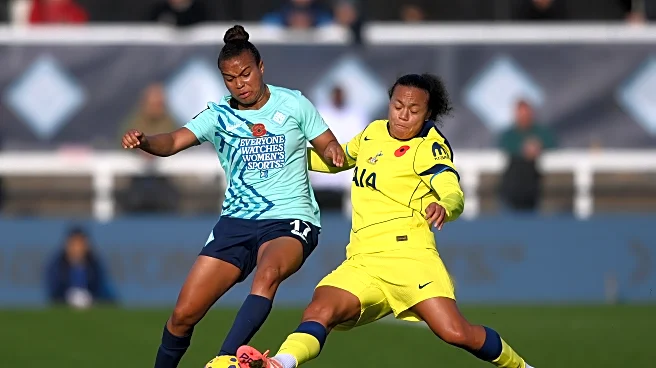What's Happening?
Manchester City defender Josko Gvardiol has revealed his daily fitness routine, which includes performing split squats to maintain knee health and overall body strength. At 23, Gvardiol is one of the top
defenders in the Premier League, and he attributes his physical condition to consistent exercise, particularly focusing on his knees due to patella tendonitis. He emphasizes the importance of keeping the tendon warm to prepare for training sessions. Gvardiol adjusts the intensity of his workouts based on how he feels, ensuring he doesn't overstrain his knees. His routine also includes upper-body workouts for both performance and aesthetic benefits, although scheduling these sessions can be challenging due to frequent matches.
Why It's Important?
Gvardiol's approach to fitness highlights the importance of personalized exercise routines for professional athletes, especially those dealing with chronic injuries. His focus on knee health is crucial for maintaining his performance on the field, which is vital for Manchester City's success. The routine also underscores the significance of balancing physical health with aesthetic goals, reflecting broader trends in sports where athletes prioritize both performance and appearance. This approach can influence training methods across sports, encouraging athletes to adopt similar strategies to manage injuries and enhance their physical capabilities.
What's Next?
As Gvardiol continues to manage his knee condition, his routine may evolve with advancements in sports medicine and training techniques. Manchester City and other teams might adopt similar personalized fitness strategies for their players, potentially leading to improved injury management and performance. Gvardiol's routine could also inspire amateur athletes to focus on injury prevention and personalized training, promoting a healthier approach to fitness.
Beyond the Headlines
Gvardiol's fitness routine reflects a broader cultural shift towards individualized health and wellness practices. As athletes increasingly share their personal training methods, there is potential for greater public interest in tailored fitness solutions. This trend could lead to innovations in sports medicine and training equipment, as well as increased demand for personalized fitness coaching.













